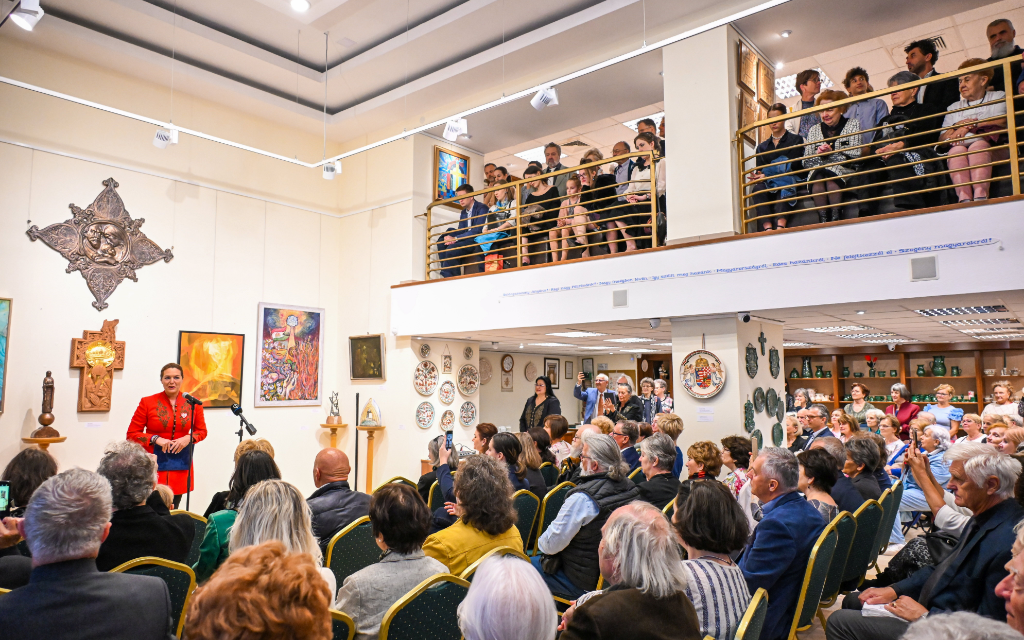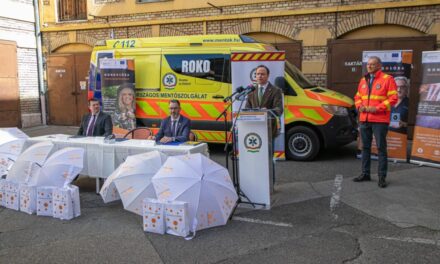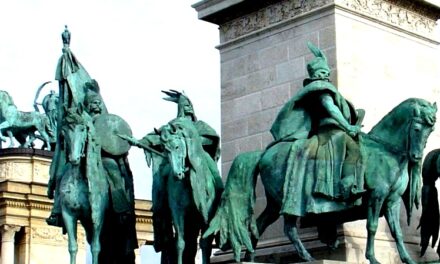Contemporary Hungarian works of art show the power of national unity at the Hungarian National Anthem exhibition, which opened on Sunday in Budapest.
The National Anthem was played for the first time on August 10, 1844, at the Óbuda Shipyard, when the Széchenyi steamship was launched. In 1949, Mátyás Rákosi asked Gyula Illyés to write a new Anthem and Zoltán Kodály to compose music for it. Illyés declined the invitation, as did Kodály. In the end, the Rákos played only the music of the National Anthem, later on at state events and school celebrations, the National Anthem could only be played together with the Soviet national anthem and the International, recalled the parliamentary secretary of the Ministry of Culture and Innovation at the opening of the exhibition.
Eszter Vitályos said: some artists recently campaigned that it is time to replace the National Anthem, because it is "no longer modern enough".
It is clear that all of this is a continuation of Rákosi's circle of thought, only apparently dressed in modern clothes - stated the state secretary, who also reminded that: from 1848, the legislature did not officially recognize Kölcsey's poem as the anthem of the Hungarian state, only on October 23, 1989 effective from XXXI. law stated that "the anthem of the Hungarian Republic is Ferenc Kölcsey's poem Hymnusz with music by Ferenc Erkel".
This text was included in the constitution valid until December 31, 2011, and on January 1, 2012, the new Basic Law of Hungary entered into force, the first part of which, National Creed, begins with the first line of the National Anthem: "God, bless the Magyars."
Referring to the findings of psychologists and literary scholars, Eszter Vitályos said that the most important ritual action related to the National Anthem is memorization, i.e. "internalization". Knowing the text will be a kind of cultural marker of belonging to the community.
The National Anthem is actually a fateful spell, said the State Secretary. He said: "Thanks to our National Anthem, the wonderful fact that we are still together now, as a true community, we feel each other's faith and thoughts. The many, many works shown here were made to the words of our national anthem, but I could also say it is a confession of faith".
The Józsa Judit Art Foundation organized the contemporary Christian creative art exhibition in the Carpathian Basin in honor of the fact that Ferenc Kölcsey clarified the National Anthem 200 years ago.
In her speech, Judit Józsa emphasized that in order to think about a unified nation, it is essential to get to know the specific richness of the parts of the nation, so that "we can get a complete picture of Hungarian culture, because this is the only way our Hungarian future can be successful."
The exhibition focuses on Christian creative art within the creative arts of the Carpathian Basin. In the past 70 years, works of outstanding quality have been created in the areas pushed beyond the border, but the domestic art history has discovered undeservedly little of them, he said, emphasizing that it is an exhibition that fills a gap,
The works can be viewed between October 8 and November 30 in the temporary exhibition hall of the Józsa Judit Gallery under Városház utca 1 in District V, the exhibition can be visited free of charge.
In addition to the open tender, the works of 84 artists from the Carpathian Basin and Hungary can be viewed at the exhibition, showing the power of national unity through contemporary Hungarian works of art.
MTI












